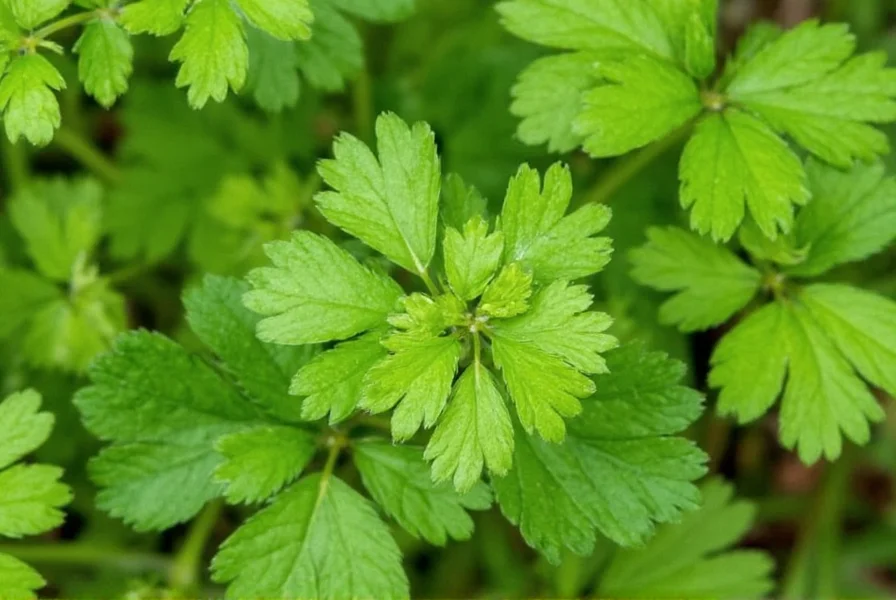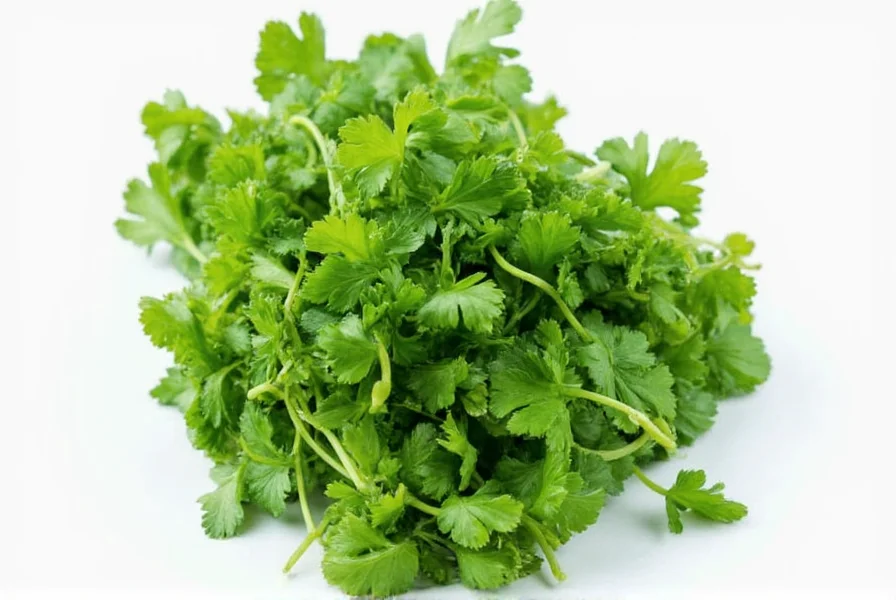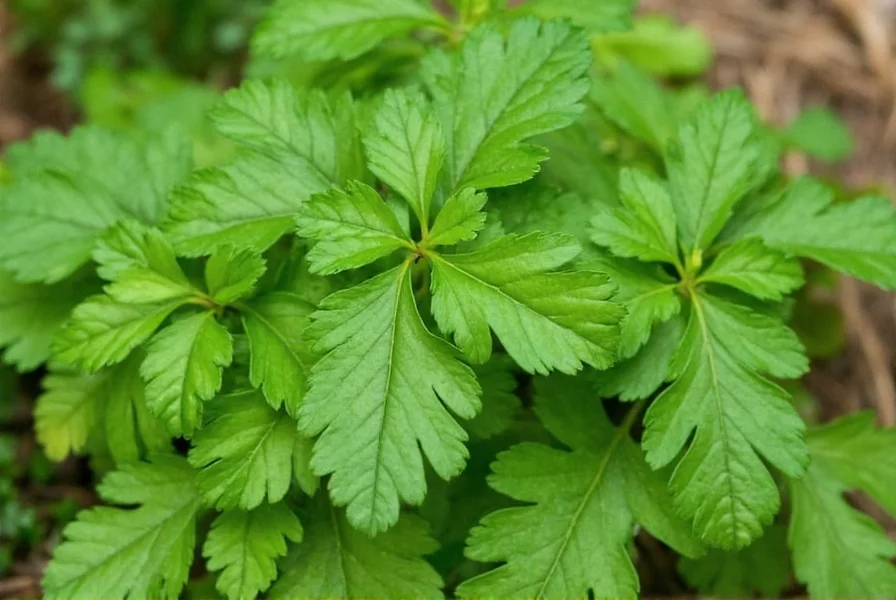Yes, cilantro and coriander come from the same plant—Coriandrum sativum. The term "cilantro" refers to the fresh leaves and stems, while "coriander" typically describes the dried seeds. This naming difference is primarily regional: "cilantro" is commonly used in the Americas and Spain for the leafy part, whereas "coriander" refers to both the plant and its seeds in most other English-speaking countries.
Understanding whether is cilantro coriander the same plant resolves a common culinary confusion that trips up home cooks and professional chefs alike. The simple answer is yes—they originate from a single botanical source, but different parts of the plant carry distinct names based on regional usage and culinary context. This distinction matters significantly when following recipes from various cultural traditions.
Botanical Identity: One Plant, Two Names
Coriandrum sativum, an annual herb in the Apiaceae family (which includes parsley, carrots, and celery), produces both the leafy greens known as cilantro and the round, tan seeds called coriander. The entire plant is edible, but each part offers unique flavors and culinary applications. The fresh leaves have a bright, citrusy taste with hints of pepper, while the dried seeds develop warm, nutty, and slightly sweet notes when toasted.

Regional Naming Conventions Explained
The terminology difference between is cilantro coriander largely depends on geography:
| Region | Leaves/Stems | Seeds |
|---|---|---|
| United States & Canada | Cilantro | Coriander |
| United Kingdom & Commonwealth | Coriander (leaves) | Coriander (seeds) |
| Spain & Latin America | Cilantro | Coriandros or Cilantro en grano |
| India | Dhaniya (leaves) | Dhaniya (seeds) |
This regional variation explains why many people searching is cilantro coriander the same thing encounter confusion. In British supermarkets, you'll find "coriander" listed for both the fresh herb and the spice, while American grocery stores separate them as "cilantro" (in produce) and "coriander" (in the spice aisle).
Botanical Development: From Leaves to Seeds
The Coriandrum sativum plant progresses through distinct growth stages:
- Early growth (3-4 weeks): Produces the delicate, lacy leaves harvested as cilantro
- Mid-season (6-8 weeks): Develops white or light pink flowers
- Mature stage (9-12 weeks): Forms the spherical seeds known as coriander
Chefs and gardeners often harvest the leaves continuously to delay flowering (bolting), as the flavor of the leaves changes once the plant begins producing seeds. The seeds must fully ripen and dry on the plant before harvesting for optimal flavor and storage.
Culinary Applications: When to Use Each
Understanding the difference between cilantro coriander plant components helps maximize their culinary potential:
- Cilantro (leaves/stems): Best used fresh in salsas, guacamole, chutneys, and as a garnish for soups and curries. Heat diminishes its flavor, so add at the end of cooking.
- Coriander seeds: Ideal toasted and ground for spice blends (like garam masala), pickling spices, sausages, and baked goods. They withstand cooking better than the leaves.
- Coriander roots: Highly prized in Thai cuisine for curry pastes, offering intense flavor.

Common Misunderstandings Clarified
Several misconceptions surround the difference between cilantro and coriander:
- Myth: They're different plants
Fact: Same botanical species, different plant parts - Myth: Cilantro is just young coriander
Fact: The leaves remain "cilantro" throughout the plant's life cycle - Myth: Coriander seeds come from a different variety
Fact: All Coriandrum sativum plants produce both leaves and seeds - Myth: The terms are interchangeable globally
Fact: Regional usage creates significant confusion
Genetic Factors in Flavor Perception
An interesting aspect of the cilantro coriander plant involves genetic differences in how people perceive its flavor. Approximately 21% of the population carries a gene variant (OR6A2) that makes cilantro taste like soap to them. This genetic predisposition affects both the leaves and seeds, though the soapy perception is more pronounced with fresh cilantro than with toasted coriander seeds.
Storage and Preservation Tips
Proper handling maintains the distinctive qualities of each component:
- Fresh cilantro: Store stems in water (like flowers) with a loose plastic bag covering, refrigerated. Lasts 7-10 days.
- Dried cilantro: Loses most flavor; not generally recommended as a substitute for fresh.
- Coriander seeds: Store whole seeds in an airtight container away from light. Maintain potency for 1-2 years.
- Ground coriander: Use within 6 months for best flavor; loses potency quickly after grinding.
Substitution Guidance
When you need to substitute one for the other in recipes:
- Cilantro substitute: Fresh parsley with a squeeze of lime juice (though flavor profile differs significantly)
- Coriander seeds substitute: Cumin or caraway seeds in equal measure (again, different flavor profile)
Important note: Fresh cilantro cannot effectively substitute for ground coriander in recipes requiring the warm, nutty flavor of the seeds, and vice versa. Understanding this difference between cilantro and coriander prevents recipe failures.
Historical Context of the Naming Divide
The linguistic split between "cilantro" and "coriander" traces back to the plant's global journey. The word "coriander" entered English from the Greek "koris" (bug), referring to the plant's pungent smell. Spanish explorers adopted a diminutive form "cilantro" for the fresh herb. When these explorers reached the Americas, they used "cilantro" for the leaves while retaining "coriander" for the seeds—a distinction that became standard in North American English but not in British English.











 浙公网安备
33010002000092号
浙公网安备
33010002000092号 浙B2-20120091-4
浙B2-20120091-4